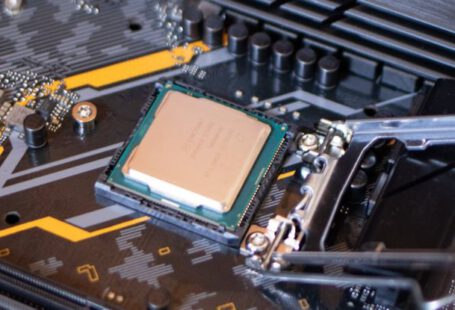Identifying bottlenecks in a system is crucial for maintaining optimal performance and efficiency. Bottlenecks can hinder the overall functionality of a system, leading to decreased productivity and potential issues. To address these bottlenecks effectively, various tools are available that can help pinpoint the underlying causes. By utilizing these tools, system administrators and IT professionals can identify and resolve bottlenecks swiftly, ensuring smooth operations and improved performance. Let’s delve into some of the tools that can aid in identifying bottlenecks in your system.
Performance Monitoring Tools
Performance monitoring tools play a vital role in identifying bottlenecks within a system. These tools provide real-time data on various system metrics, such as CPU usage, memory utilization, disk I/O, and network activity. By monitoring these metrics, administrators can pinpoint areas of the system that are experiencing high loads or resource constraints, indicating potential bottlenecks. Tools like Nagios, Zabbix, and Prometheus offer comprehensive monitoring capabilities, allowing for proactive identification of bottlenecks before they escalate into critical issues.
Profiling Tools
Profiling tools are essential for analyzing the performance of specific components or processes within a system. These tools help identify bottlenecks by tracking the execution time of functions, method calls, and SQL queries. By profiling the code and identifying areas that are consuming excessive resources or causing delays, administrators can optimize these components to eliminate bottlenecks. Profiling tools like Xdebug, Blackfire, and New Relic provide detailed insights into the performance of applications and can help in identifying and resolving bottlenecks effectively.
Log Analysis Tools
Logs are a valuable source of information for identifying bottlenecks in a system. Log analysis tools help administrators parse through log files to identify patterns, errors, and anomalies that may indicate potential bottlenecks. By analyzing log data, administrators can identify performance issues, resource constraints, and other factors that may be impacting system performance. Tools like Splunk, ELK Stack (Elasticsearch, Logstash, Kibana), and Graylog offer powerful log analysis capabilities, enabling administrators to uncover bottlenecks and take proactive measures to address them.
Network Monitoring Tools
Network bottlenecks can significantly impact system performance, especially in environments with high network traffic. Network monitoring tools help administrators monitor network activity, bandwidth utilization, packet loss, and latency to identify potential bottlenecks. By analyzing network data, administrators can pinpoint areas of congestion, faulty equipment, or misconfigurations that may be causing network bottlenecks. Tools like Wireshark, SolarWinds Network Performance Monitor, and PRTG Network Monitor provide in-depth network monitoring capabilities, allowing administrators to detect and resolve network bottlenecks promptly.
Database Performance Tools
Databases are critical components of many systems, and bottlenecks in database performance can have a significant impact on overall system performance. Database performance tools help administrators monitor database queries, indexing, storage utilization, and other factors that can impact database performance. By analyzing database performance metrics, administrators can identify slow queries, inefficient indexes, and other issues that may be causing database bottlenecks. Tools like SQL Profiler, Percona Monitoring and Management, and Oracle Enterprise Manager offer comprehensive database performance monitoring capabilities, enabling administrators to optimize database performance and eliminate bottlenecks.
Conclusion: Harnessing the Power of Tools to Identify Bottlenecks
In conclusion, identifying and resolving bottlenecks in a system is essential for maintaining optimal performance and efficiency. By utilizing performance monitoring tools, profiling tools, log analysis tools, network monitoring tools, and database performance tools, administrators can effectively pinpoint and address bottlenecks in their systems. These tools provide valuable insights into system performance metrics, enabling administrators to take proactive measures to optimize system performance and ensure smooth operations. By harnessing the power of these tools, organizations can enhance productivity, reduce downtime, and deliver a seamless user experience.





